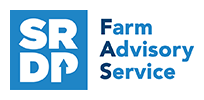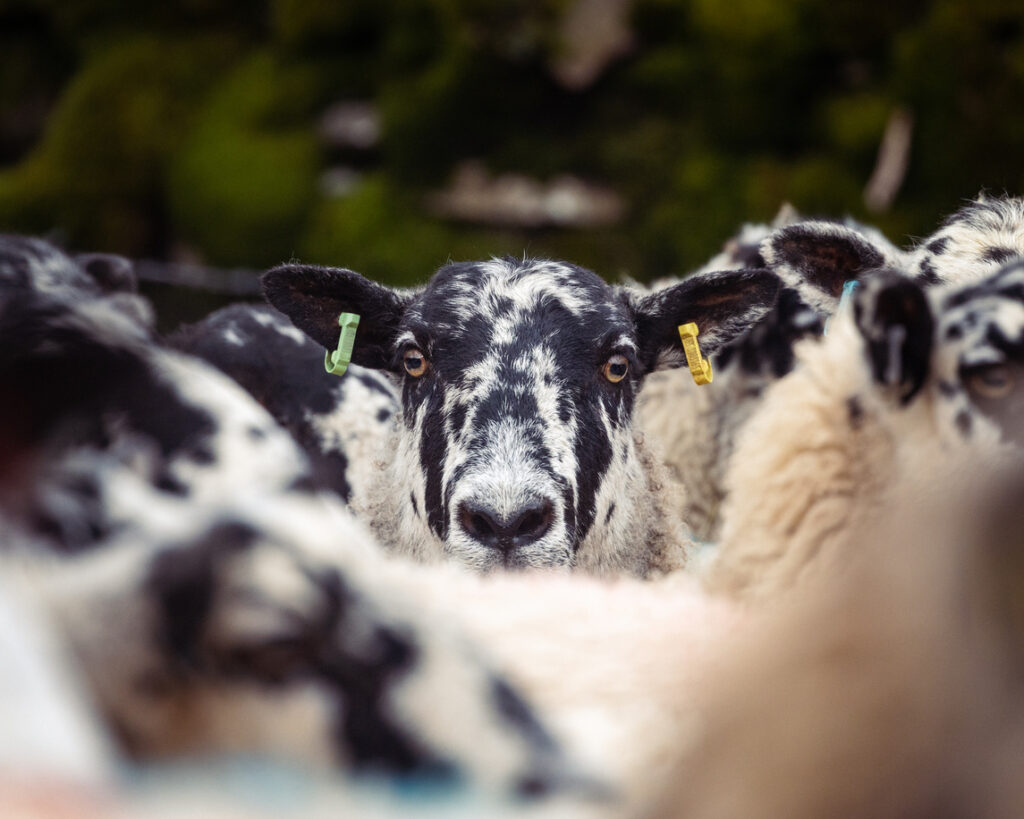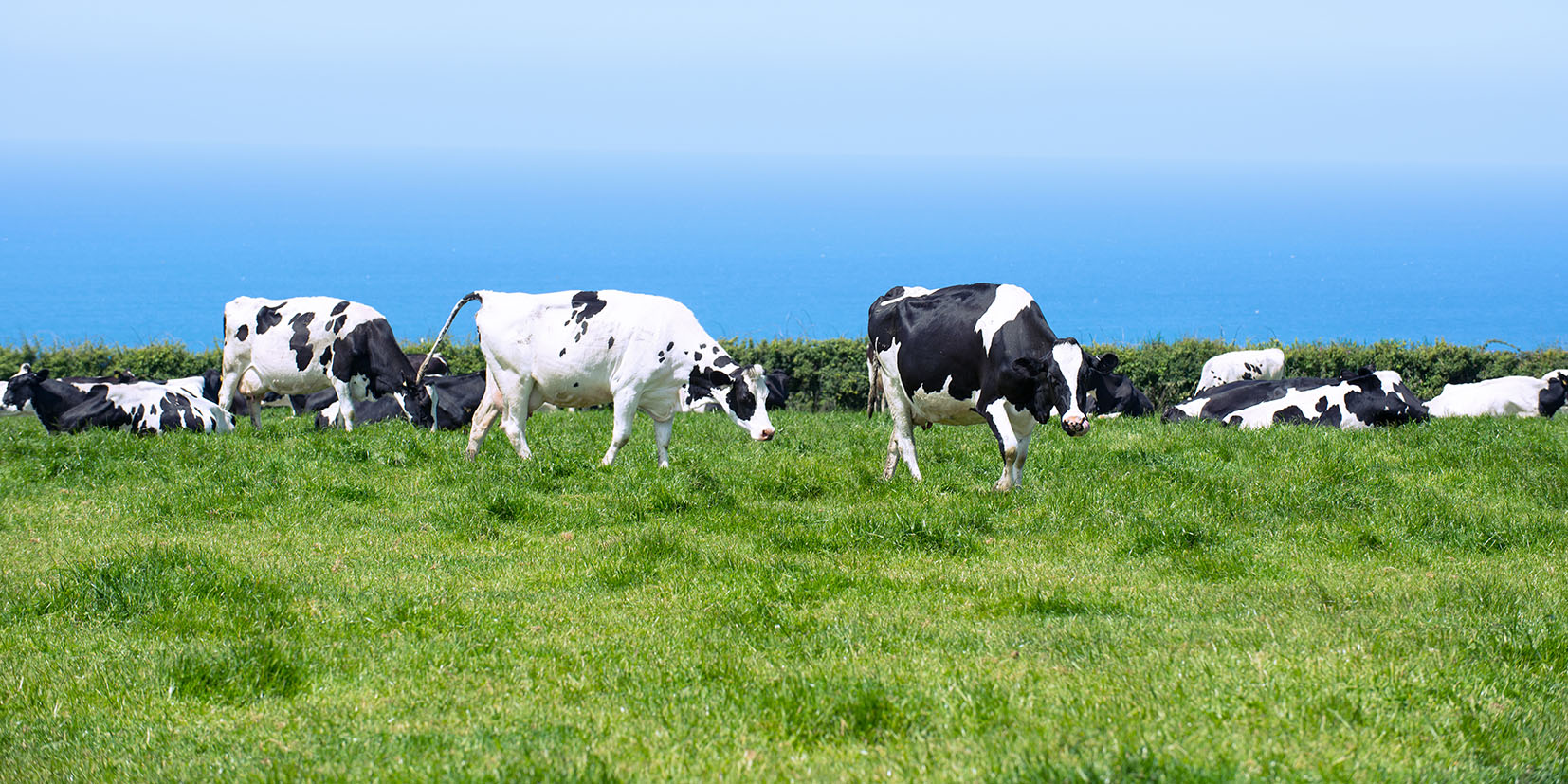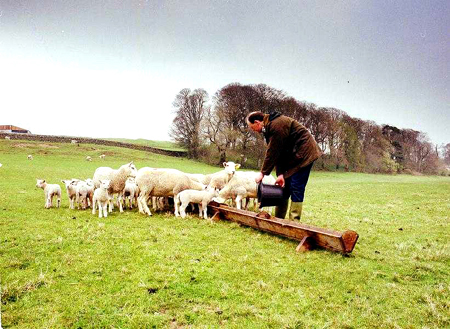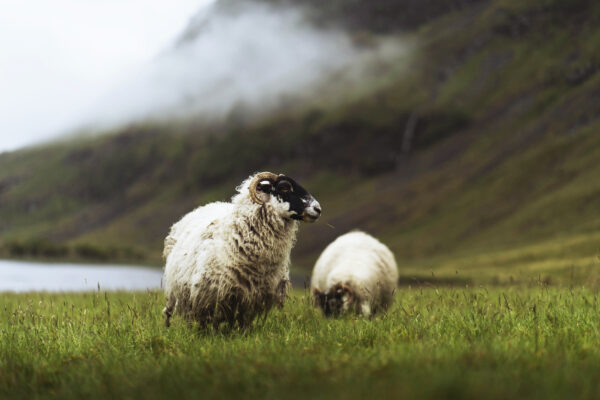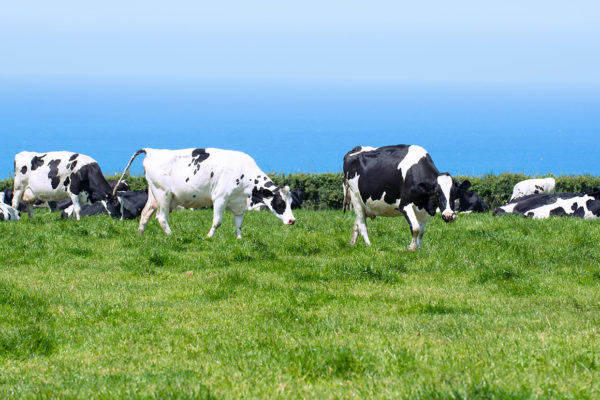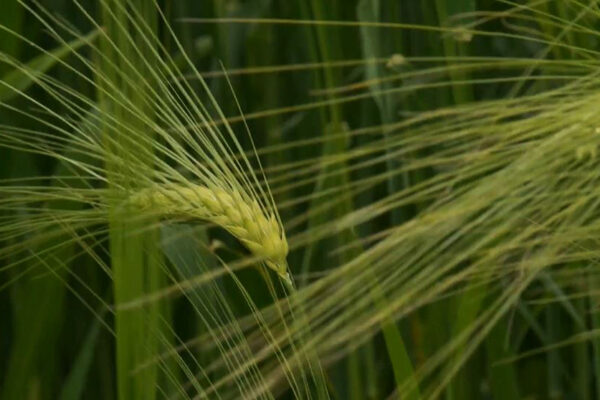Journey to Net Zero Emissions on Mixed Farms
11 August 2025Benchmarking carbon emissions against kilograms of agricultural output sold provides a standardised and practical way to measure and compare environmental impact. This approach normalises emissions data, accounting for differences in farm size, production systems, and types of agricultural activities. By linking emissions to output, such as meat, or wool sold, it becomes possible to evaluate how efficiently a farm is using its resources relative to the products it generates. This case study, taken from a participant in the FAS Connect programme, aims to give an insight into how carbon benchmarking is being applied by Scottish farm businesses.

N & C M Henderson – A Case Study
The business N & C M Henderson is located outside the village of Blackwaterfoot on the island of Arran. The business is owned and operated by David Henderson, who farms in partnership with his parents and family. David is a conventional, traditional upland farmer, with a mix of enterprises that include a commercial breeding herd and flock, he also grows forage crops, silage and hay – the latter two of which he sells on occasion. The main unit is Kilpatrick, but like many others on the island, the business also has land around the village and up the Shiskine Valley. In addition to his farm, David is also the island’s presentative in the National Farmers Union and the contract farmer for the local Dougarie Estate.
The farm extends to just over 178 hectares of permanent land, with an additional 25 hectares seasonal and includes a mosaic of different land types and habitats. At Kilpatrick, the farm is comprised mostly of improved grassland pasture, productive and used for grazing and silage, with areas of heath and rough grazing along the coast and towards the hills at the rear of the farm. In the Shiskine Valley, much of the land is more natural, with fields of rush pasture and unimproved grassland.
David has been a keen supporter of the Net Zero Arran group and FAS Connect, since the inception of the group in 2019/20 and views carbon savings as tied to efficiency and better overall business performance. The business was a participant of the Beef Efficiency Scheme and has continued auditing since the scheme ended, as a result, their last carbon audit is the sixth completed by the business.
Why Benchmark Against Kilograms Of Agricultural Output?
When carbon auditing a farming business, benchmarking carbon emissions against kilograms of agricultural output sold provides a standardised and practical way to measure and compare environmental impact. This approach normalises emissions data, accounting for differences in farm size, production systems, and types of agricultural activities. By linking emissions to output, such as meat, wool or grain sold, it becomes possible to evaluate how efficiently a farm is using its resources relative to the products it generates.
This method emphasises the relationship between productivity and environmental sustainability. By focusing on emissions per unit of output, farmers can identify areas where improvements in efficiency can simultaneously reduce emissions and enhance profitability. For instance, practices that improve feed efficiency or herd health can lower emissions while maintaining or increasing the volume of high-quality products sold.
Additionally, this benchmarking approach facilitates fair comparisons across farms and aligns with global sustainability standards, which often assess environmental performance in terms of emissions intensity. It also resonates with market and consumer demands for transparency about the environmental impact of agricultural products, making it easier to communicate the carbon footprint of goods in a meaningful way.
Ultimately, benchmarking emissions against agricultural output highlights opportunities for sustainable intensification, encouraging farmers to adopt practices that balance economic viability with environmental stewardship while contributing to broader climate goals.
Results Since 2019
- Since 2019, when emissions were at their highest, the business has cut emissions by 122,831 kg CO2e, a 20% reduction against 2025 performance
- With support, investment and time, consistent improvement and implementation of positive change is possible
- Better grassland and soil management will help to counter the need for artificial inputs
Since engaging with Net Zero Arran in 2021 the business has complete three carbon audits, the results of which have been summarised in the charts in this report.
| What has worked? | Rationale |
|---|---|
| Grassland reseeding | Locking in carbon is great, but the plough is still a valuable tool in the right circumstances. Reseeding grasslands, particularly after a short break crop means that the farm can keep leys productive |
| Slurry and nutrient management | The business reviewed their slurry management in recent years, making use of the Sustainable Agricultural Capital Grant Scheme (SACGS) to purchase a dribble bar. Application of slurry with a dribble bar means that farm resources can be more effectively targeted. In the years between 2021 and 2025 the contribution of inorganic fertilisers to the herd and flock carbon footprints reduced by 24% and 40% respectively |
| Feed rationing | Relying more on homegrown forage and improving its quality means that less purchased feed has been required by the business over the years. Comparing 2025 levels to 2021 purchased feed has been cut by 31% in the herd and 15% in the flock |
| Barriers to change | Rationale |
|---|---|
| Agricultural inputs remain higher than the standard data comparisons | Fuel and fertiliser and their contributions to the enterprise carbon footprints are both higher than the standard data comparisons – something that has remained constant since the launch of Net Zero Arran |
| Limited potential for woodland creation | The farm is fragmented across the island and as such the availability of grazing land is paramount, it also has limited woodland presently. With no obvious areas for woodland creation and limited areas to work from, planting is difficult to propose without significant impact on the business |
| Island community | Like every other business on Arran, being part of an island community comes with advantages and disadvantages. Sales and purchases being contingent on getting to the mainland means that a loss of connectivity extends the time in which livestock must be retained, increasing the total emissions allocated to the business. At the same time, being unable to get specialist support across to the island means that on occasion, the business is unable to make best use of resources that other businesses on the mainland can |
Results And Findings

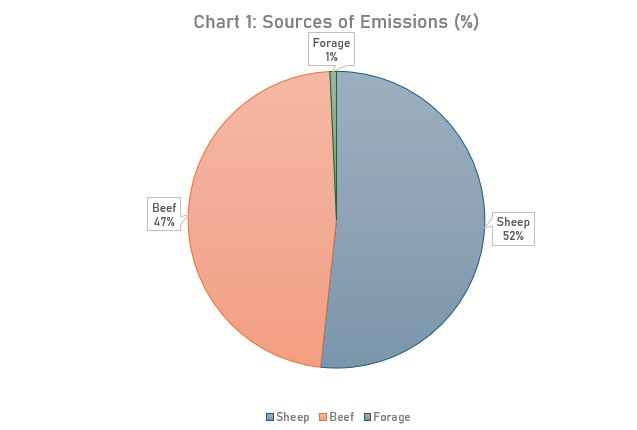
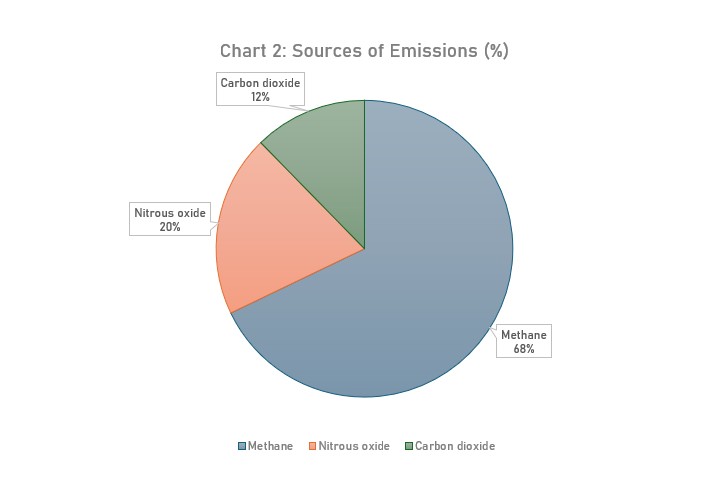
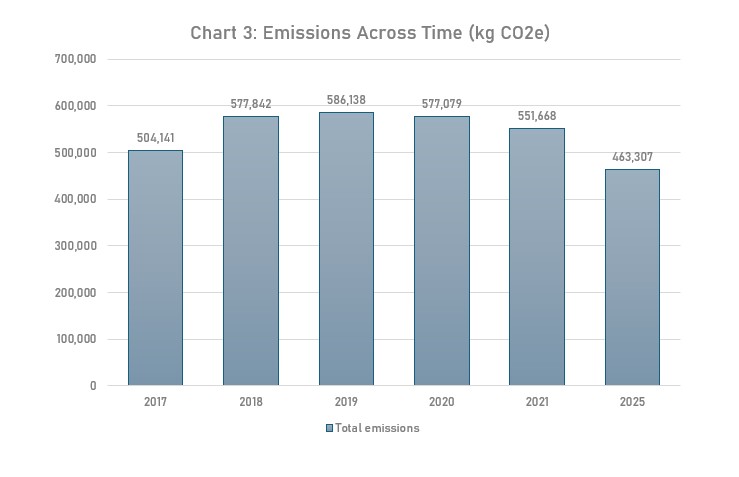
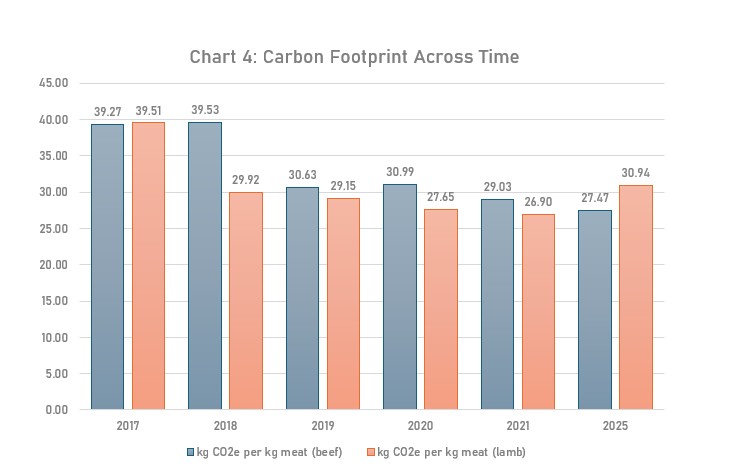
Charts 3 and 4 show the change in total emissions over time and the change in enterprise carbon footprints over those same time periods. From 2019 onwards, the farm has shown a marked decline in total emissions while maintaining a somewhat consistent carbon footprint, achieving similar levels of saleable output with fewer associated kg CO2e emissions.
Across the herd and flock, significant changes have taken place across the years, some more important than others. In terms of livestock management, the key change observed was a significant average weight gains across most classes of stock. This can partly be explained by investment in animal handling and weighing equipment but is also reflective of the positive changes made by the business. By increasing livestock weights, particularly at sale, even with fewer total animals, the carbon footprint can be maintained while emissions reduce.
Another important aspect of the results of the audits is the increasing acknowledgement of the importance of natural capital assets. In 2017 the carbon calculator did not recognise the significance of soil and grassland management in influencing atmospheric carbon capture. The later inclusion of hedges in the calculator and improved capturing of farm woodlands means that by 2025 the farm has enough assets to offset 161,938 kg CO2e, the equivalent of 34% of total emissions.
Learn More About FAS Connect

Aimed at promoting knowledge exchange between specialists and farmers, and between farmers themselves, FAS Connect operates across the country, facilitated by consultants and advisors to address the topics and issues impacting farming businesses at sector level and across the industry. The initiative, which is funded by Scottish Government as part of the FAS programme overall is crucial to fostering cooperation and interaction between farmers and is key to many developing their networks and having the confidence to drive forward their businesses.
FAS Connect is run throughout Scotland and covers a wide range of topics, from grassland to arable, livestock and diversification, crofting, carbon and everything in between. For more information and to find out how to get involved, click here: https://www.fas.scot/connect/
Alexander Pirie, SAC Consulting
Related Resources
Sign up to the FAS newsletter
Receive updates on news, events and publications from Scotland’s Farm Advisory Service
